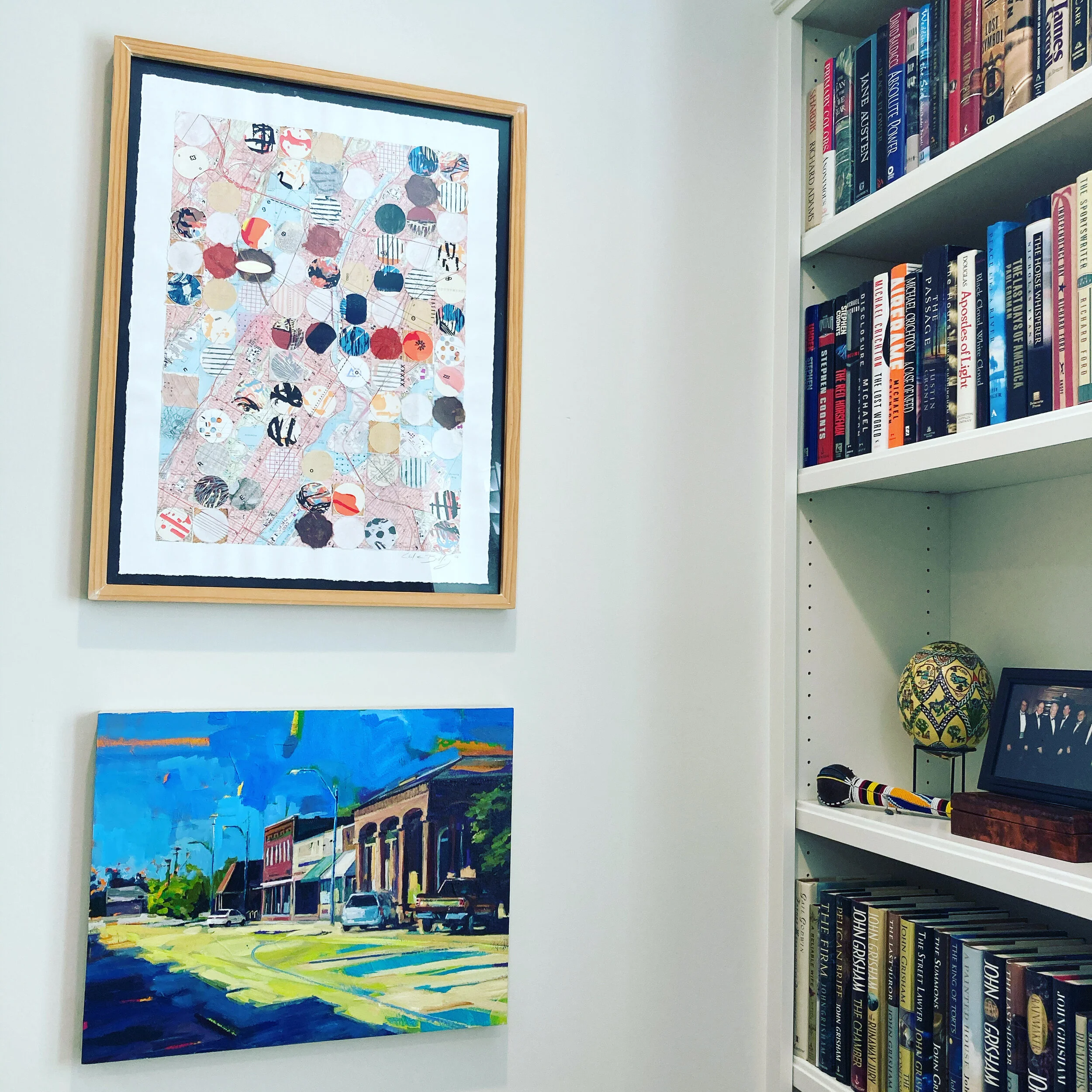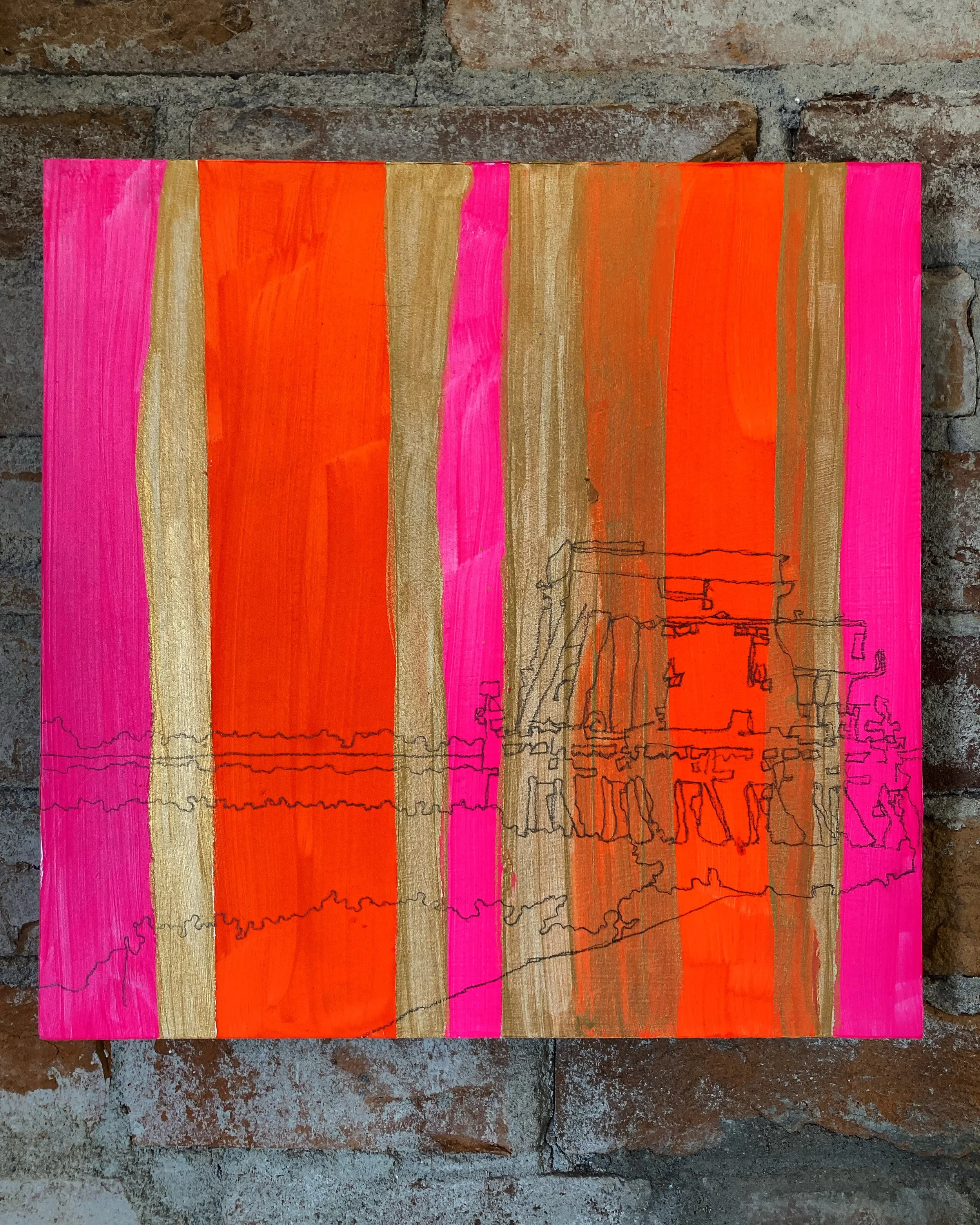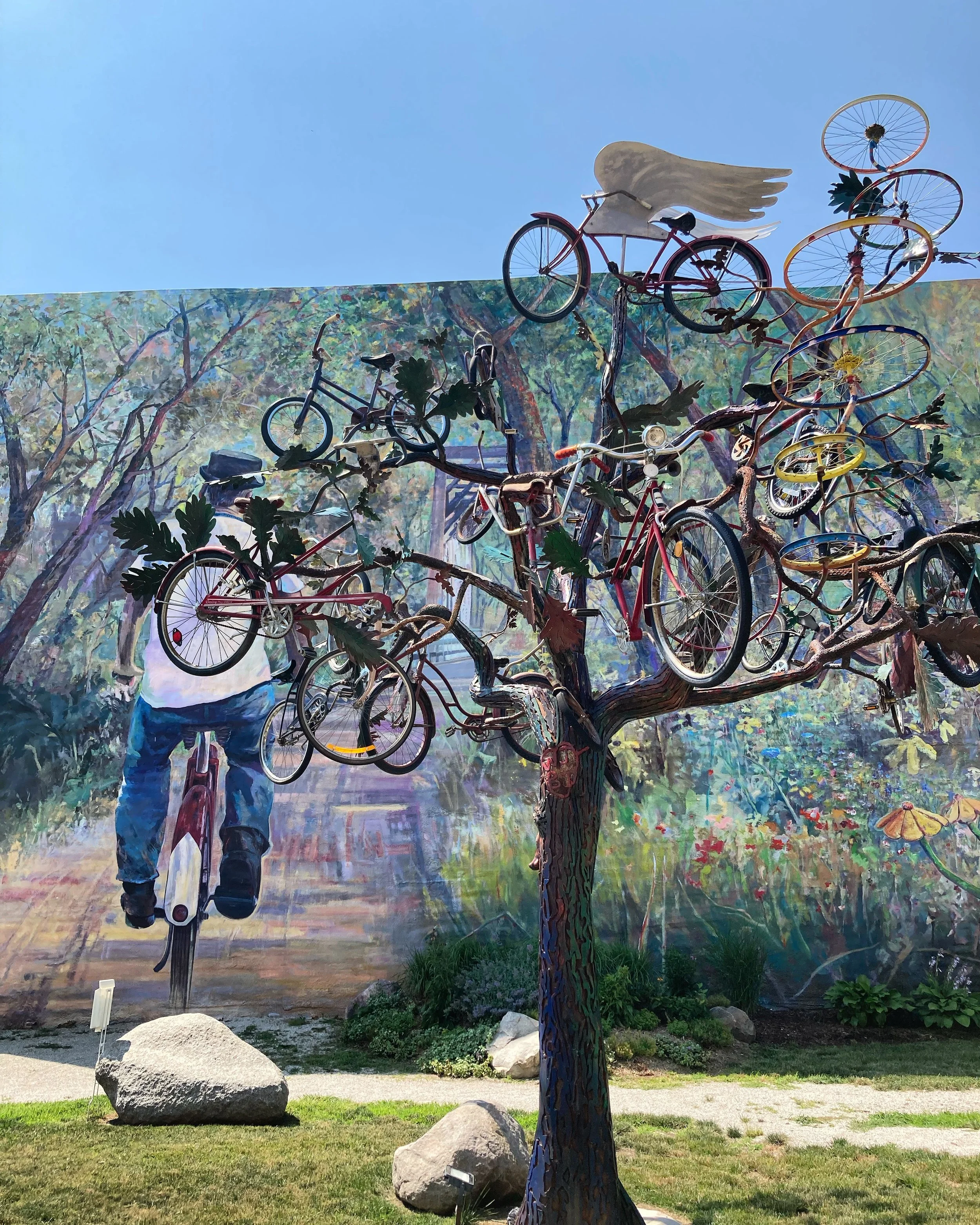Greetings! In this final installation (see what I did there) of how to hang art on your walls, we’ll be going over the nuts and bolts (ha) of the hanging part, i.e. what tools you need, measuring formulas, and best practices for showcasing your work in the best light possible (it’s just too easy).
Read MoreMy awesome intern Paige created this short video about the evolution of Deep Roots, the final painting inspired a conversation I had in 2019 with Drick Rodgers and Julia Rodgers Clark in Rolling Fork, Mississippi.
Read MorePlacing art within a space can be intimidating, particularly if you’re a newbie. Where should it go? How do you create a meaningful visual experience in your home? Do you need all new furniture to match new work? And finally, how do you hang art, particularly if you’re allergic to power tools?
Let’s walk through some of these questions one by one.
Read MoreI am cheap. I come from a long line of proud cheapskates. My mother had us bring home Ziploc bags from our lunchboxes so she could wash and reuse them. I am incapable of throwing cardboard boxes away and I make my own damn chicken broth. I try to trick myself into believing I’m some kind of misplaced pioneer or a diehard environmentalist, but really, I am cheap. So no surprise that when I absolutely must frame something, you better believe I am going to find a “vintage” option. Here’s a list of tips that I use to find perfectly good frames to upcycle.
Read MoreLast week, I wrote a little about discerning whether you need a frame or not.
And you may have thought “I just spent a bunch of money, so it’d be great NOT to frame” or decided “I want to display my cool postcard or print collection and I do NOT want to wait until I can afford frames for all 78 of them.”
Congrats! You’re not alone! And you have lots of options!
Read MoreI once taught a class at Iowa State University on how to run a gallery and how to use the gallery to engage the local community. One of the first classes each semester was on how to install an art exhibition. This involved spreadsheets, cleaning supplies, post-it notes, levels, drills, and lots of math. I get a lot of questions from friends and family on the reg about where and how to frame and hang their art, so I thought I would share some insight.
Read MoreWelcome back! For the past two weeks, we’ve discussed why you should begin an art collection, and how to start an art collection. This final segment is a best-practices-approach to buying art: connecting with artists, supporting their practice, and purchasing their work.
Read MoreMaybe you definitely would like to support more artists and buy more art, and you have no idea where to begin. You’re in luck! Here are a couple steps to get you clear on the art and artists you’d like to support, plus a few ideas on how to find these wonderful folks.
Read MoreTrue confession: It took me 34 years to call myself an artist. I’m embarrassed to say that I associated that label with a whole mess of bad connotations that I mistakenly bought into and wanted to avoid. I also had major imposter syndrome, and being told by a former professor that I didn’t have any talent really didn’t help matters.
Read MoreI made a short video about the creation of Ingrained Care, a new painting inspired a conversation I had in 2019 with Drick Rodgers and Julia Rodgers Clark in Rolling Fork, Mississippi.
Read MoreRecently, I co-facilitated How Can Community Arts Help People Feel Like They Belong in Your Town?, a Small City Workshop for the Iowa League of Cities.
This workshop is part of the Rural Shrink Smart initiative, a interdisciplinary team funded by the National Science Foundation that's exploring how to increase the quality of life in rural communities with shrinking populations.
Creatively, I've been mulling over patterns. Literal and physical patterns in our environment, such as architecture, wallpaper, row crops, as well as cultural patterns. How single motifs or behaviors add up in meaningful ways over the course of a lifetime of a person or a landscape or a community. How we repeat the same societal patterns over and over and over until they become calcified habits in our communities, no matter the cost or damage.
And how change happens in spite of all that.
(You know. Breezy stuff.)
Here's how that's starting to show up on the easel.
Read MoreWhen I first started working for Iowa State Extension and Outreach, I learned to focus on the assets a town has and not on their deficits. I’ve found this to be so helpful and so effective. I grew up in Mississippi and I’ve lived in Iowa for the last 15 years. In both states, I spend a lot of time driving around and listening the stories. It’s the best part of my job. In each new community I visit, I inevitably meet hear about someone doing some really creative thing to make their community better. These folks are scrappy – pulling together local resources and assets and talents together that’s grassroots, creative, and locally impactful.
Read MoreLast month, I was invited to participate in the Placemaking in Small & Rural Communities Virtual Conference hosted by the amazing Arts Extension team at the University of Kentucky. (They are the OG of community arts extension and rural placemaking.)
I thought I’d share a few key points from that presentation over the next few weeks, including 4 common themes that I’ve noticed in effective and inclusive rural placemaking efforts.
Read MoreA topic that arises fairly frequently in my work is:
How can I support artists if:
I can’t afford to buy their work,
I’ve already bought their work/seen their performance
I don’t have room for their work in my home,
I can only buy so many books, see so many performances, etc, etc, etc.
Well, friend, this list is for you.
Read MoreMost of you know that I teach. A majority of my artist friends teach. We for many reasons, in many ways and in many roles. We teach K-12 with a rolling cart, we teach in colleges and universities, we teach in community spaces, we teach in our studios, we teach online. Today I’d like to focus on how two fabulous artists who teach: painter Annie Guldberg and fiber artist Jean Haley.
Read MoreI can think of no one who’s a better and more generous community-builder than Derek Covington Smith, my friend and fellow artist from Brookhaven, Mississippi.
Case in point…
Read MoreLast summer, I had the good fortune of connecting with Annie Guldberg, an expressionist oil painter living in Mount Pleasant, Iowa (pop. 9724). She humored me by showing her incredible home studio and answering tons of questions over a lunch of Cuban sandwiches at The Grange Public House in downtown Mount Pleasant.
Read MoreIf I had a dollar for every time I’ve been asked that in the last 12 months, I could probably take a pretty nice weekend somewhere. It’s one of those questions that I never have a decent and coherent answer to, and in the spirit of self-betterment, I thought it was time to hold myself accountable.
All of the following are true. Some are true more days than others.
Read MoreI made a short video about the early stages of Cultivation, a new painting still in progress that’s based on a conversation I had in 2019 with Benjamin Saulsberry, Public Engagement and Museum Education Director of the Emmett Till Interpretive Center in Sumner, Mississippi.
Read More


















